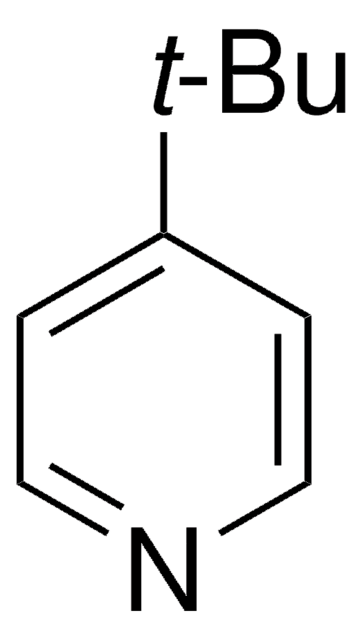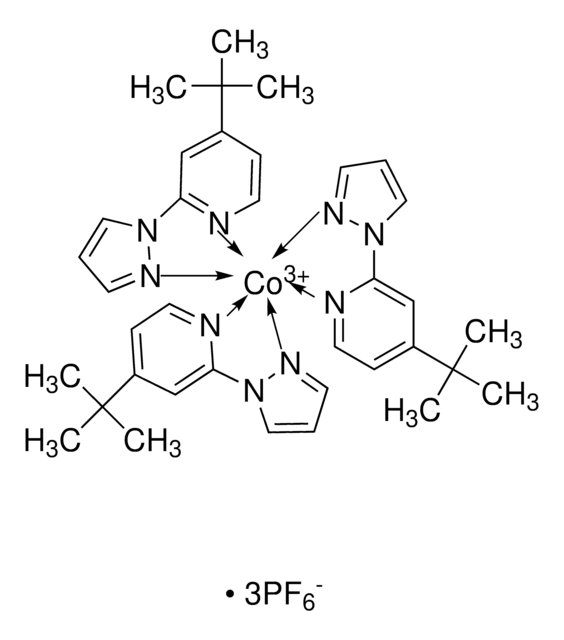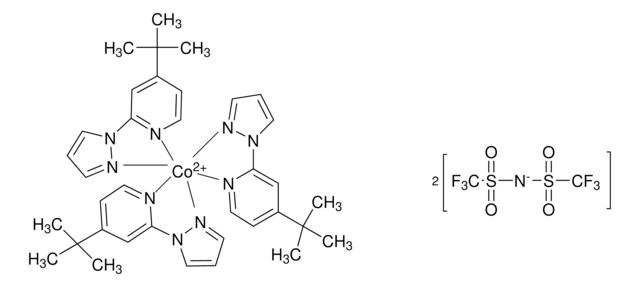805394
FK 209 Co(III) TFSI salt
Synonym(s):
tris(2-(1H-pyrazol-1-yl)-4-tert-butylpyridine)cobalt(III) tri[bis(trifluoromethane)sulfonimide]
About This Item
Recommended Products
Assay
98%
Quality Level
form
powder
mp
281.5 °C (exp.)
SMILES string
O=S([N-]S(=O)(C(F)(F)F)=O)(C(F)(F)F)=O.O=S([N-]S(=O)(C(F)(F)F)=O)(C(F)(F)F)=O.O=S([N-]S(=O)(C(F)(F)F)=O)(C(F)(F)F)=O.CC(C)(C)C1=CC(N2N=CC=C2)=NC=C1.CC(C)(C)C3=CC=NC(N4C=CC=N4)=C3.CC(C)(C)C5=CC=NC(N6C=CC=N6)=C5.C
InChI key
PZTBQPSYUSXHSB-UHFFFAOYSA-N
Related Categories
General description
Application
Signal Word
Warning
Hazard Statements
Precautionary Statements
Hazard Classifications
Eye Irrit. 2 - Skin Irrit. 2 - Skin Sens. 1 - STOT SE 3
Target Organs
Respiratory system
Storage Class Code
11 - Combustible Solids
WGK
WGK 3
Flash Point(F)
Not applicable
Flash Point(C)
Not applicable
Choose from one of the most recent versions:
Already Own This Product?
Find documentation for the products that you have recently purchased in the Document Library.
Customers Also Viewed
Articles
Dye-sensitized solar cells (DSCs) are 3rd generation solar cells combining the promise of high efficiency with low production costs.
Dr. Perini and Professor Correa-Baena discuss the latest research and effort to obtain higher performance and stability of perovskite materials.
Next generation solar cells have the potential to achieve conversion efficiencies beyond the Shockley-Queisser (S-Q) limit while also significantly lowering production costs.
For several decades, the need for an environmentally sustainable and commercially viable source of energy has driven extensive research aimed at achieving high efficiency power generation systems that can be manufactured at low cost.
Global Trade Item Number
| SKU | GTIN |
|---|---|
| 805394-5G | 4061832980027 |
Our team of scientists has experience in all areas of research including Life Science, Material Science, Chemical Synthesis, Chromatography, Analytical and many others.
Contact Technical Service








![[6,6]-Phenyl C61 butyric acid methyl ester >99%](/deepweb/assets/sigmaaldrich/product/structures/359/221/d990c746-0960-4c69-bf76-fe09b193824d/640/d990c746-0960-4c69-bf76-fe09b193824d.png)
